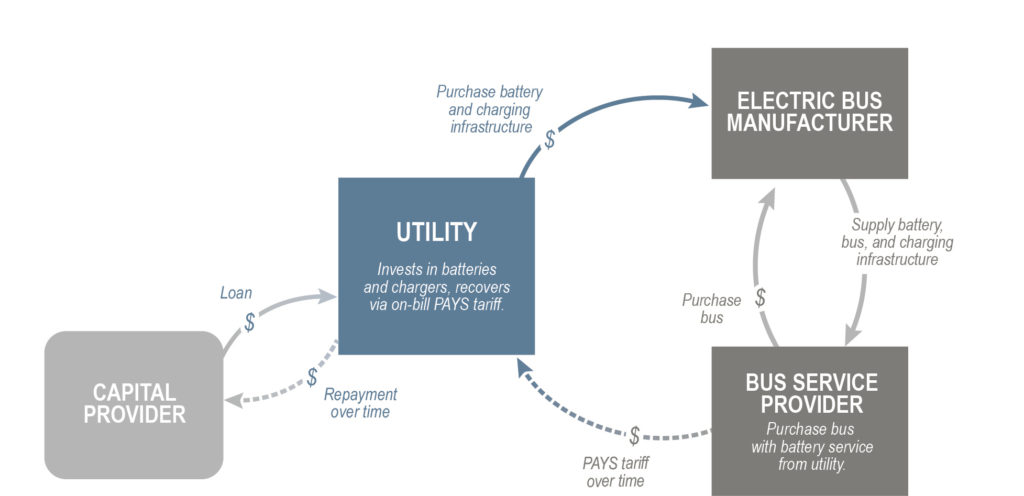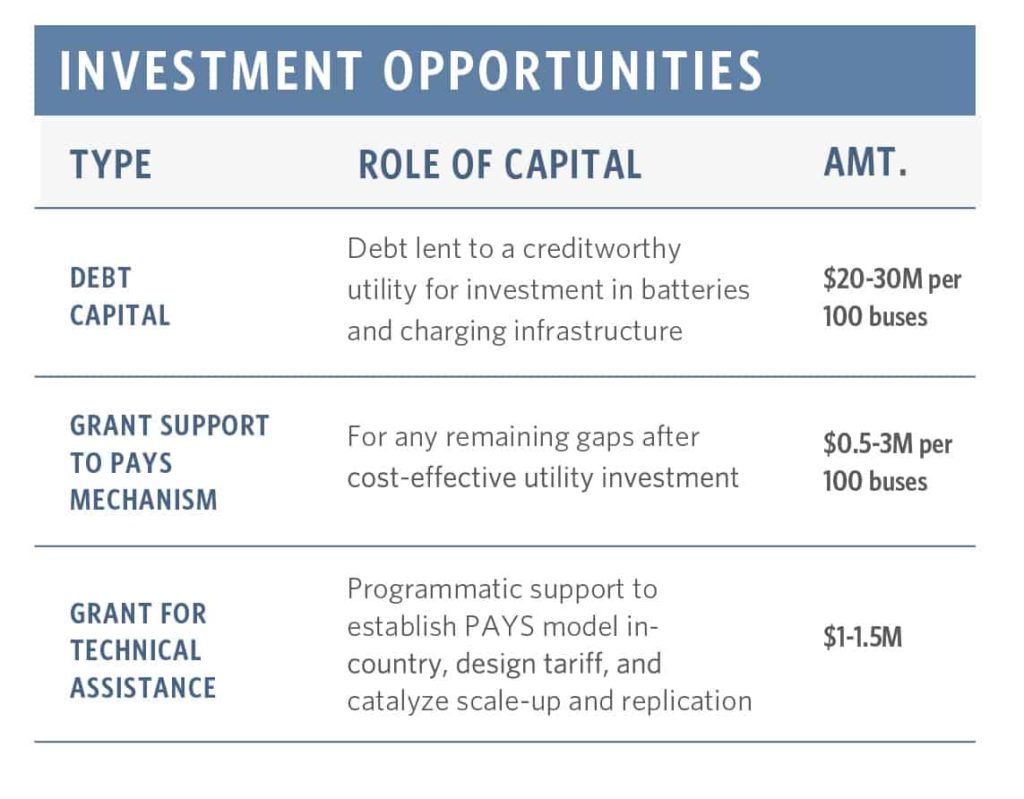Electrifying transportation is critical to meeting climate goals. Electric transit buses offer a strong starting point: they have a compelling business case, and can reduce air pollution and greenhouse gas emissions. With declining battery costs and lower fuel and maintenance expenses, electric buses have lifecycle costs that are increasingly competitive with diesel buses in many markets.
However, despite these advantages, electric buses face several barriers to wider adoption. More than 100,000 new transit buses are purchased worldwide each year, yet outside of China, only 13% of municipal transit buses sold are electric. Barriers include upfront costs 40-50% higher than diesel buses (driven by battery and charging infrastructure costs); counterparty and technology risks faced by bus service providers and financial institutions; and high-cost capital with limited availability.
PAYS® for Clean Transport reduces the upfront cost of EVs, starting with transit buses, by harnessing a utility’s capacity to invest in on-board batteries and recover its cost as a service charge.
INNOVATION
PAYS has already been successfully applied to other climate solutions, overcoming barriers to investment at scale without imposing additional liabilities on customers (unlike loans or leases). In a PAYS for Clean Transport transaction:
- A utility leverages its access to capital to invest in batteries and charging infrastructure for electric buses to reduce their upfront cost to customers, which accelerates electric bus procurement while expanding the utility’s revenue base.
- A bus service provider agrees to pay a fixed charge on monthly electric bills that is less than estimated savings versus diesel, reducing operating expenses from day one without incurring additional balance sheet liabilities.
In many cities, an electric bus purchased with PAYS is cheaper than diesel over its life, leverages much greater private investment per grant dollar, and dramatically reduces fleet greenhouse gas and urban pollutant emissions.
IMPACT
Financial analysis indicates strong potential for impact in half a dozen countries on three continents. For example, in Santiago, Chile, a PAYS investment for 100 buses leverages more than 70 dollars of investment capital for each grant dollar, while reducing overall grant requirements by 97%, generating US$ 25 million in electricity sales revenues, and eliminating 62,000 tons of CO2 emissions.
Scaling up to transit buses in all developing country cities would save over 57 million tons of CO2 emissions per year, and represent a US$ 25 billion annual investment opportunity for transit buses, growing further as PAYS expands to other vehicle types.
DESIGN

A utility offers each bus service provider a service agreement (PAYS tariff), in which the utility pays for the batteries and charging infrastructure for new electric buses using internal funds or debt financing. The bus service provider can then purchase the buses at no additional upfront cost over diesel buses.
The PAYS tariff allows the utility to recover its costs within the warranty period through a fixed charge on the bus service provider’s regular monthly electric bill. The tariff is calibrated to ensure the estimated operating cost of an electric bus is less than that of a comparable diesel bus.
Once the utility’s costs are fully recovered, the bus service provider owns the battery and charger assets. In some cases, the battery and charger cannot be fully capitalized within these constraints, so the remaining amount needed to bring the upfront costs of electric and diesel buses to parity is met with grant support; or concessional capital is used to reduce financing costs.


